Making Of 'FAUP - Path to Knowledge'
制作图书馆走廊,作者:Jacinto Monteiro
翻译:www.cger.com
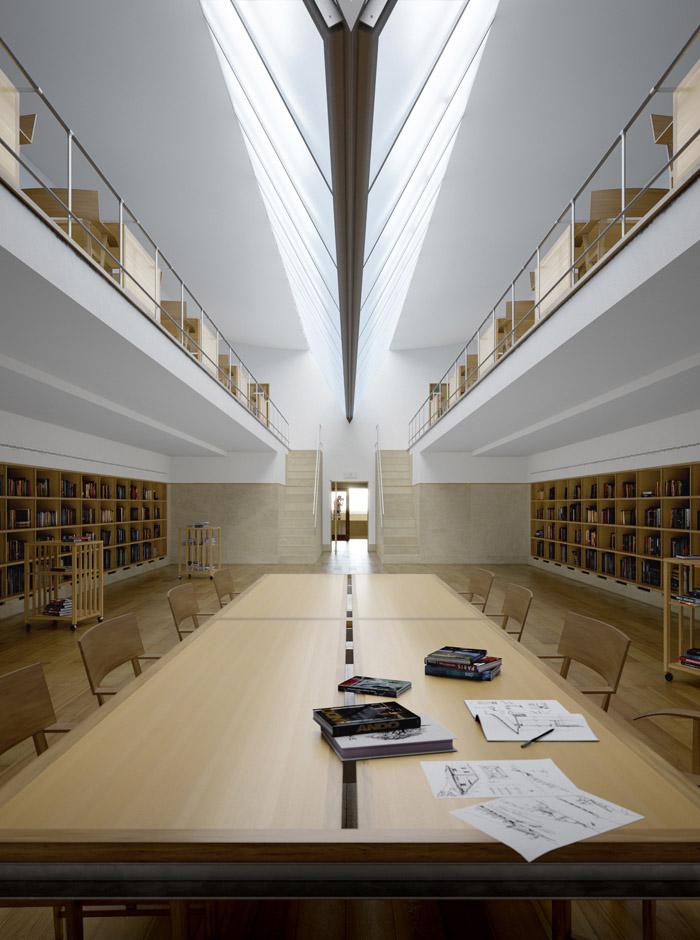
Inspiration
This personal work was created specifically for the Evermotion competition 2011. The digital artist could choose any interior space that inspired him. The main aim was for it to be photoreal.
I chose the architecture university where I've been studying for six years. For a long time I wanted to create the path that goes from the street to the end of the building complex, which is the library itself. Because of time constraints I couldn't model everything so I focused on a short part of that same path.
Inspired by Michelangelo, the original architect Siza created a difficult path that leads you up ramps, down stairs and through almost labyrinth-like routes until you reach the end of the complex: the library. It is, in my opinion, the perfect place to read, mainly because the shadow is so soft and doesn't interfere with your reading. There is great geometry, fine details and a remarkable sense of scale in this space.
The goal of my work was to respect Siza's architectural concept, simplicity, materials, light and design, and obviously make it look hyper-realistic.
这件个人作品是专门为2011年Evermotion比赛创作的。数字艺术家可以选择任何激发他灵感的室内空间。主要目的是让它变得逼真。 我选择了我学习了六年的建筑大学。很长一段时间以来,我想创造一条从街道到建筑群尽头的路径,也就是图书馆本身。由于时间限制,我无法对所有内容进行建模,因此我专注于同一路径的一小部分。
受米开朗基罗的启发,最初的建筑师西扎创造了一条艰难的道路,引导您上坡道,下楼梯,穿过几乎迷宫般的路线,直到您到达建筑群的尽头:图书馆。在我看来,这是阅读的理想场所,主要是因为阴影非常柔和,不会干扰您的阅读。这个空间有很好的几何形状、精细的细节和非凡的规模感。 我的工作目标是尊重Siza的建筑理念,简单性,材料,光线和设计,并明显使其看起来超现实。
Modeling
This part of the article covers the modeling of the museum space. For the floor, ramp and near wall I modeled simple boxes with the desired dimensions, around 1m x 50cm (Fig.01 - 02). Although it seems like the floor is one big object it is not. It's composed of different pieces (elements) separated by 5mm. This is very important because at the end of all this modeling I wanted to give each element a different ID - using the Unique Material plugin. Once the basic model was done, I applied a checker material with 2,0 tiling in order to know how well it was distributed after using the RailClone Pro plugin. In the end, I changed the checker material to a marble, which you will see in the texturing section.
本文的这一部分涵盖了博物馆空间的建模。对于地板、坡道和近墙,我用所需的尺寸(约 1m x 50 厘米)对简单的盒子进行了建模(图 01 - 02)。虽然地板似乎是一个大物体,但事实并非如此。它由由5毫米隔开的不同部分(元素)组成。这非常重要,因为在所有这些建模结束时,我想为每个元素提供不同的 ID - 使用独特的材料插件。基本模型完成后,我应用了带有 2,0 平铺的检查材料,以了解使用 RailClone Pro 插件后的分布情况。最后,我将棋盘格材质更改为大理石,您将在纹理部分看到。
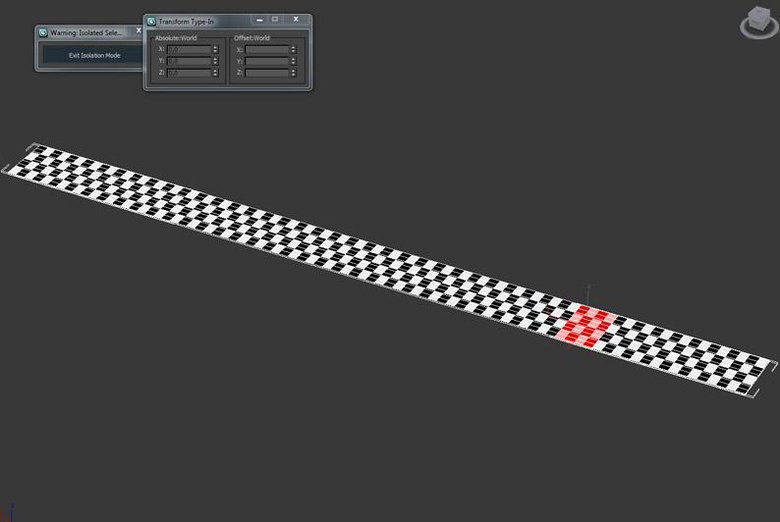
Fig.01
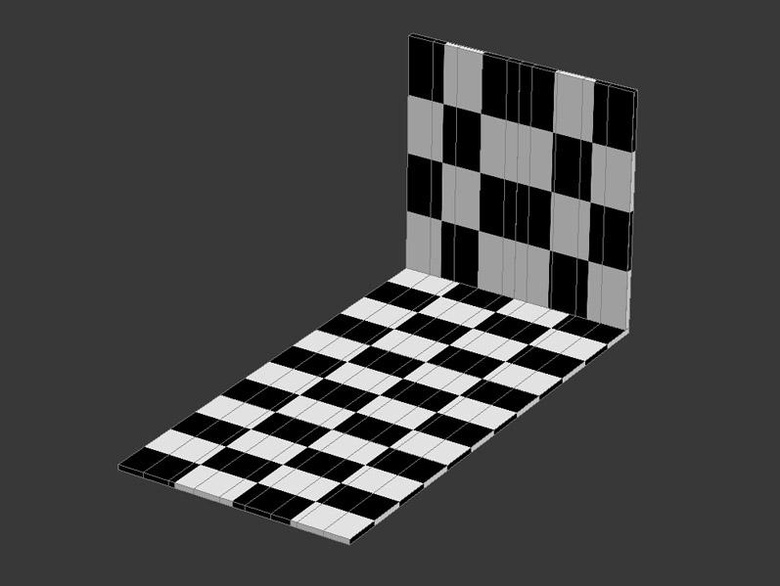
Fig.02
I then created two splines, one for the floor and the other for the ramp. This determines their path when using the RailClone Pro plugin (Fig.03).
然后,我创建了两条样条曲线,一条用于地板,另一条用于坡道。这决定了它们在使用 RailClone Pro 插件时的路径(图 03)。
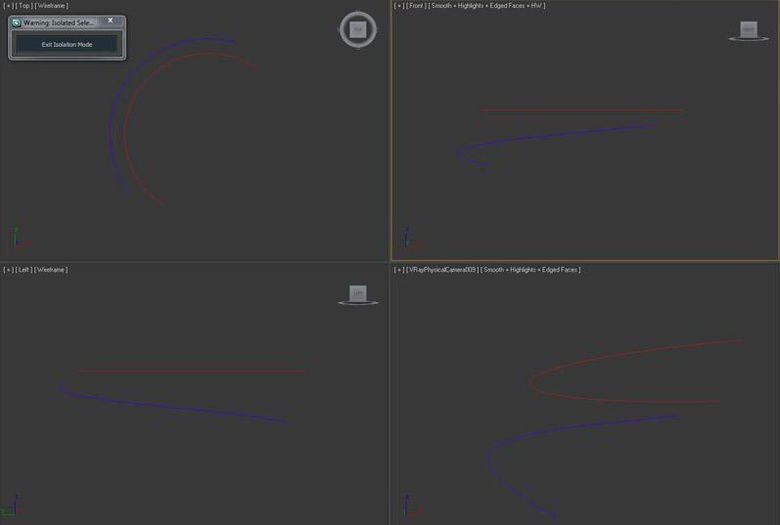
Fig.03
This is the final model after tweaking the parameters a bit in the RailClone settings. Everything else was set as default (Fig.04 - 05).
这是在 RailClone 设置中稍微调整参数后的最终模型。其他一切都设置为默认值(图 04 - 05)。

Fig.4
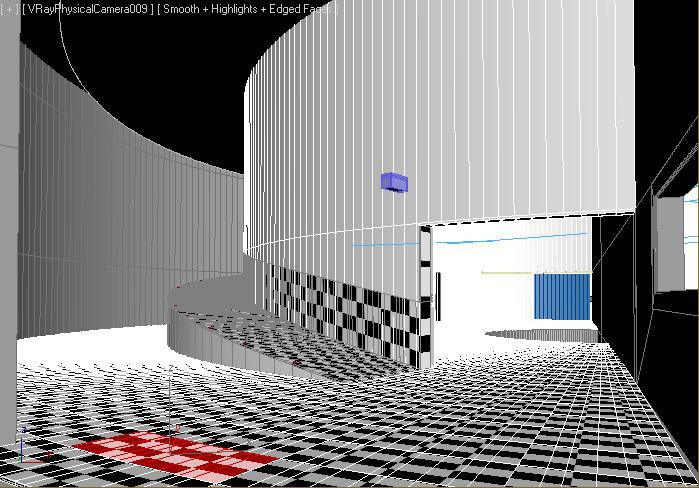
Fig.5
After I had done this I converted the Railclone geometry into an editable poly object. Then, using the Unique Material ID free plugin, I gave the floor and ramp objects different IDs automatically. Each marble unit (element) had a different ID now. This made the marble material (multi-texture plugin) work perfectly once it was applied to the poly object.
完成此操作后,我将 Railclone 几何体转换为可编辑的多边形对象。然后,使用唯一材料 ID 免费插件,我自动为地板和坡道对象提供了不同的 ID。现在,每个大理石单元(元素)都有不同的ID。这使得大理石材质(多纹理插件)在应用于多边形对象后可以完美工作。
Texturing
Next I want to talk about the V-Ray dirt present on the edge of most of the wood materials. I will focus on the darker wood. Take a look at the detailing in Fig.06 - 07. As you can see, over the diffuse map there is a darker, thin edge with a few subtle differences on it. That is generated by V-Ray dirt with noise inside the diffuse channel. It's a little detail that can make the difference, especially in close-ups.
接下来我想谈谈大多数木材边缘存在的 V-Ray 污垢。我将专注于较暗的木材。请看图06 - 07中的细节。如您所见,在漫反射地图上方有一个较暗的细边缘,上面有一些细微的差异。这是由 V-Ray 污垢产生的,漫射通道内的噪声。这是一个可以发挥作用的小细节,尤其是在特写镜头中。
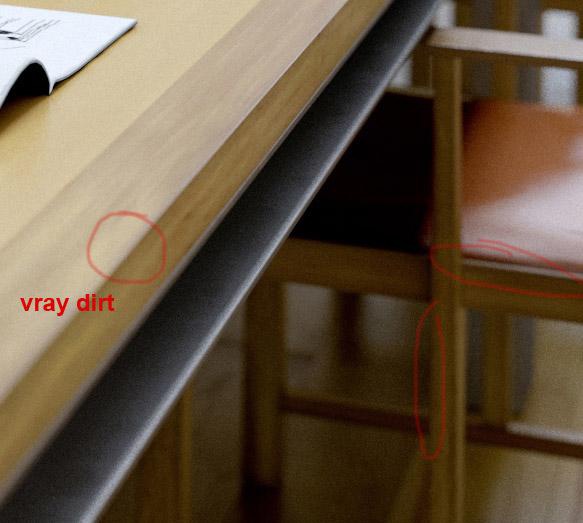
Fig.066
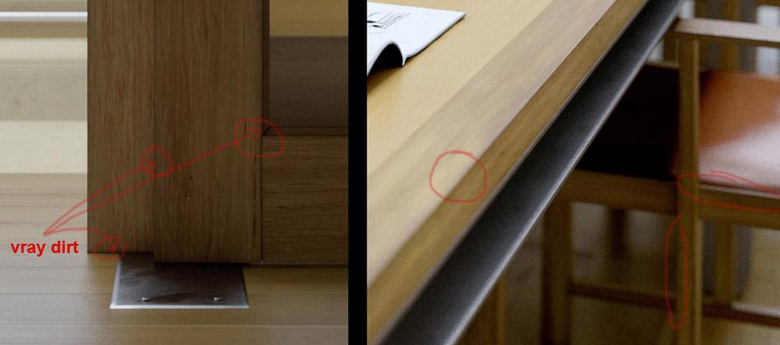
Fig.07
Fig.08 - 09 show the general settings for the wood material.
图08 - 09显示了木材的一般设置。
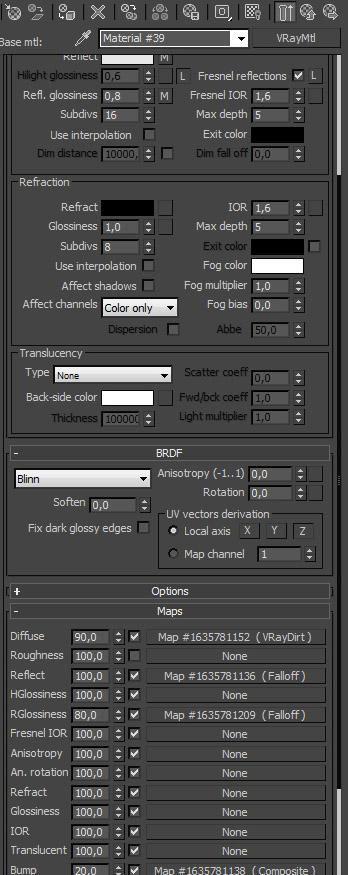
Fig.09
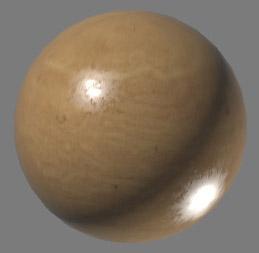
Fig.10
You will notice that the V-Ray dirt in the diffuse channel has a small radius, so that it does not go too far over the real wood diffuse. Also by ticking Invert Normal the parameter will change the direction of the raytracing. When it is off the rays are traced outside the surface; when on they are traced inside the surface. Basically it means that the dirt areas will appear on all the edges (if bias X, Y and Z are set to zero) (Fig.10 - 12).
您会注意到漫射通道中的 V-Ray 污垢半径很小,因此它不会在实木漫射上走得太远。同样通过勾选反转法线,该参数将改变光线追踪的方向。当它关闭时,光线被追踪到表面之外;当打开时,它们会在表面内部追踪。基本上,这意味着污垢区域将出现在所有边缘上(如果偏置 X、Y 和 Z 设置为零)(图 10 - 12)。
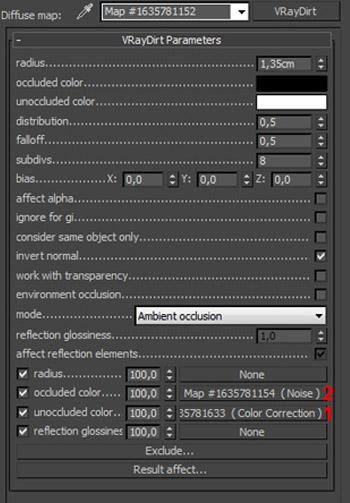
Fig. 10
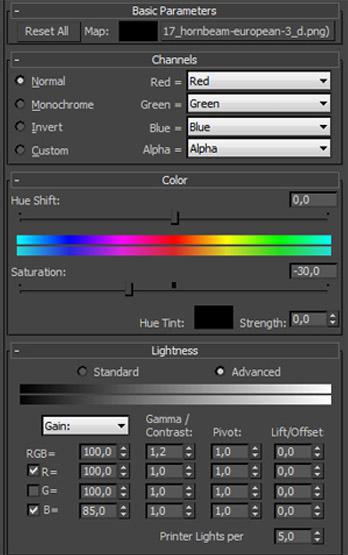
Fig.11
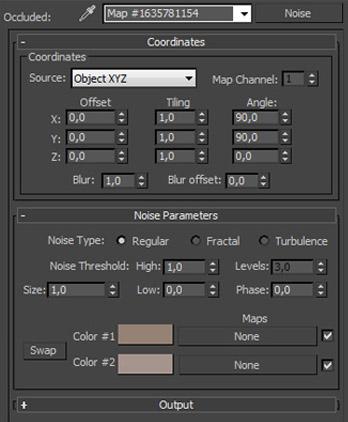
Fig.12
The un-occluded color is a normal diffuse map. In my work I always use color corrections and trigger the advanced settings, changing Gamma, Red, Green and Blue values and removing a bit of the saturation (in this case -30). It's never the same twice, as the material or scene is always different. I do all sorts of tests until all the materials blend together properly.
The noise inserted in the occluded color slot will make the edge behave in a random way. In this case, it was important to choose the colors inside the noise wisely so that they would blend well with the un-occluded color (diffuse map). This was so the edge didn't look too dark or too similar to the wood itself.
In some photos of the subject building I noticed that the marble on the floor had gained a slight green tint, probably due to humidity of some sort. I took that into account when texturing the floor. In Fig.13 you can see I used the famous multi-texture plugin in a subtle way.
未遮挡的颜色是法线漫反射贴图。在我的工作中,我总是使用颜色校正并触发高级设置,更改伽玛,红色,绿色和蓝色值并删除一点饱和度(在本例中为-30)。它永远不会两次相同,因为材料或场景总是不同的。我做各种各样的测试,直到所有材料正确混合在一起。
插入遮挡颜色槽中的噪声将使边缘以随机方式运行。在这种情况下,明智地选择噪点内的颜色非常重要,这样它们才能与未遮挡的颜色(漫反射贴图)很好地融合在一起。这样边缘看起来就不会太暗或与木材本身太相似。
在主题建筑的一些照片中,我注意到地板上的大理石获得了轻微的绿色色调,可能是由于某种湿度。我在为地板铺纹理时考虑到了这一点。在图例.13中,您可以看到我以一种微妙的方式使用了著名的多纹理插件。
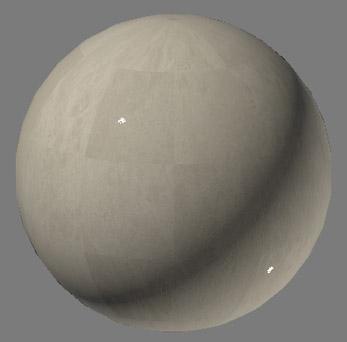
Fig.13
Fig.14 shows the general settings of the V-Ray material. They are nothing too fancy. The diffuse channel is a composite with two types of map. Layer 1 is the aforementioned multi-texture, and layer 2 is the dirt map set to Multiply. The dirt map was painted in Photoshop (Fig.15).
图例.14显示了V-Ray材料的常规设置。它们没什么太花哨的。漫反射通道是具有两种类型贴图的复合通道。第 1 层是前面提到的多纹理,第 2 层是设置为乘法的污垢贴图。泥土地图是在Photoshop中绘制的(图15)。
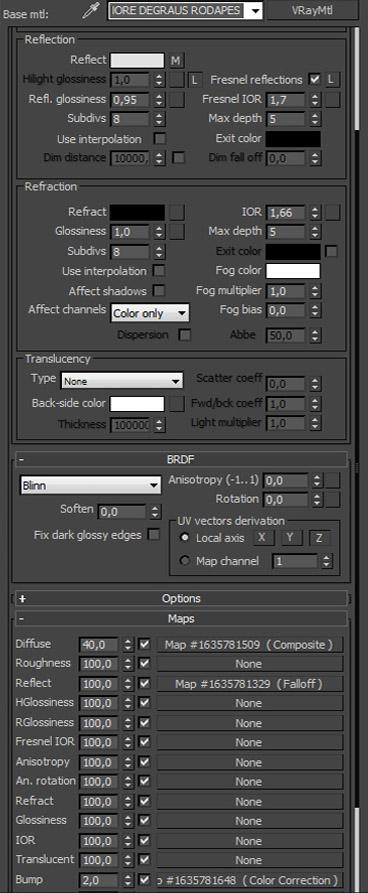
Fig.14
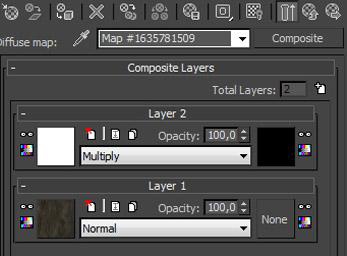
Fig.15
Fig.16 shows the multi-texture settings that make up the first layer. I used about eight types of different marble maps for this multi-texture, which I acquired at CGSource.com.
图例.16显示了构成第一层的多纹理设置。我为这个多纹理使用了大约八种不同的大理石贴图,这是我在 CGSource.com 时获得的。
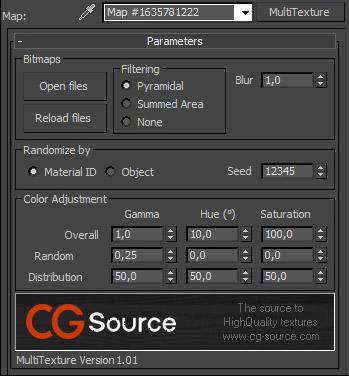
Fig.16
Layer 2 was the composite maps, the dirt map and its mask. I used the same map, but rotated it 90 degrees to add more dirt (Fig.17 - 19).
第 2 层是合成地图、污垢地图及其遮罩。我使用相同的地图,但将其旋转 90 度以添加更多污垢(图 17 - 19)。

Fig.17

Fig.18
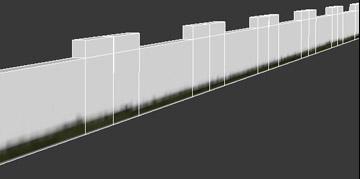
Fig.19
Light
The light system used was basically an HDRI inside a V-Ray Light Dome and a V-Ray Sun. The big difference here (or perhaps the little secret) is the skylight glass and what happens inside the structure. At first, I wanted to have only a V-Ray light dome, but the result didn't look very realistic. So I decided to boost the light inside the skylight and treat the glass as if it were being hit by bounces of light that would eventually pass to the interior.
Fig.20 shows the lights and how and where they were placed. There is a V-Ray light with a skylight portal in one of the windows, but it had zero effect on the scene and was just there for testing purposes; it isn't used in the final scene. A V-Ray light with an intensity of 10,0 was set to Visible and placed inside the skylight.
使用的照明系统基本上是V射线光穹顶和V射线太阳内的HDRI。这里最大的区别(或者可能是小秘密)是天窗玻璃和结构内部发生的事情。起初,我只想有一个V-Ray光穹,但结果看起来不是很逼真。所以我决定增强天窗内的光线,把玻璃当作被最终会传递到内部的光线反射击中。
图例.20显示了灯光及其放置方式和位置。其中一个窗口中有一个带有天窗门户的 V-Ray 灯,但它对场景的影响为零,只是为了测试目的;它不会在最终场景中使用。强度为 10,0 的 V-Ray 灯设置为可见并放置在天窗内。
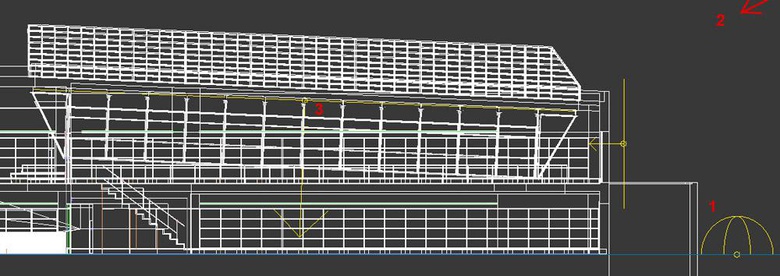
Fig.20
I wanted the frost glass to have a glossy look and at the same time a nice refraction so that it would be possible to see the metal structure inside of the skylight. The glass was made using a V-Ray blend material, which was a glossy glass combined with a V-Ray light material. It was set to an intensity of 100, the color was RBG (57, 95, 153) and the blend amount was a gray value equal to 5 (Fig.21 - 22).
我希望霜玻璃具有光泽的外观,同时具有良好的折射率,以便可以看到天窗内部的金属结构。玻璃是使用 V-Ray 混合材料制成的,这是一种与 V-Ray 光材料相结合的光泽玻璃。它被设置为100的强度,颜色为RBG(57,95,153),混合量为等于5的灰度值(图21 - 22)。
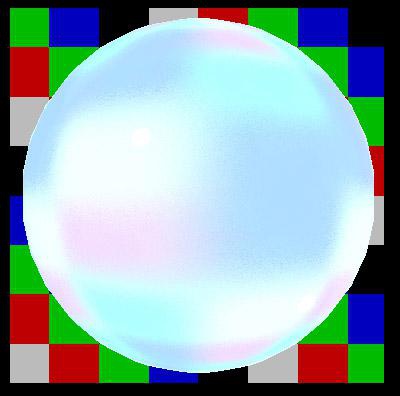
Fig.21
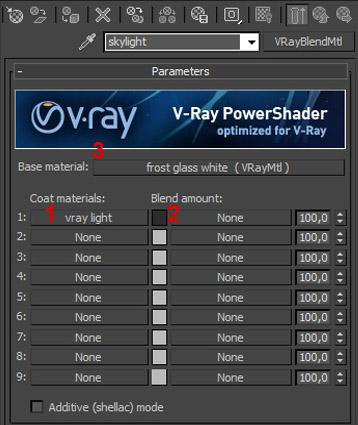
Fig.22
Here are the frosted glass settings (Fig.23).
以下是磨砂玻璃设置(图 23)。
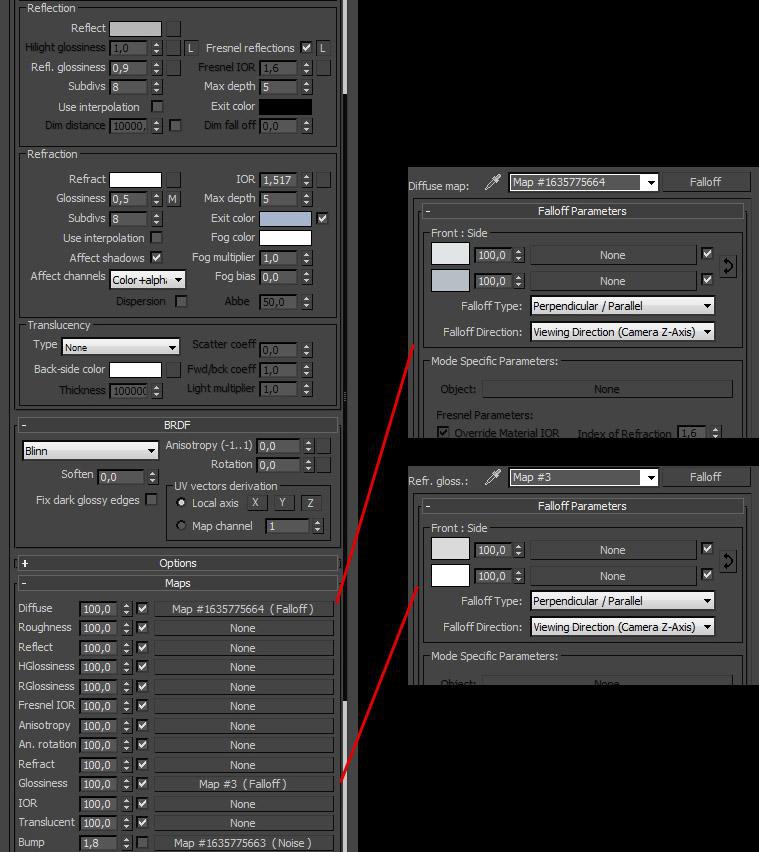
Fig.23
Rendering
During the testing period I used universal settings, but I decided that I wanted to create an image over 3500 pixels high so universal settings were no longer an option. For the final images I used an irradiance map and light cache. I won't explain much about the settings except that I rendered the first images at a smaller resolution (four times lower that the final output; in my case it would be 875 x 619 pixels) and saved the irradiance map pre-passes (*.vrmap) plus the light cache map (*.vrlmap) to use afterwards for the final image. By using these maps you can skip the irradiance and light cache process and go straight to the render itself.
Take a look at the GI settings in Fig.24, which are the ones I used for the 875 x 619 render. In the irradiance map settings I set the Min and Max rate to -3 and 0 respectively. That meant a high quality irradiance map. If I had tried to render the final image with these settings it would have been impossible, but since I was rendering at a lower resolution I just saved the irradiance and light cache maps as it wouldn't take much longer to render than 1 hour on an 8 core computer. After the irradiance and light cache maps were calculated and saved I went back to the render settings and set the resolution to 3500 x 2625 pixels. Also, in the Mode section of the irradiance map settings, I changed Single Frame to a *.vrmap file and saved it. I also did that for the light cache file. For a good explanation of this process, check out the V-Ray Complete Guide written by Franscesco Legrenzi.
在测试期间,我使用了通用设置,但我决定要创建超过 3500 像素高的图像,因此通用设置不再是一种选择。对于最终图像,我使用了辐照度图和光缓存。我不会解释太多关于设置的信息,除了我以较小的分辨率渲染了第一批图像(比最终输出低四倍;在我的例子中,它将是 875 x 619 像素)并保存辐照度图预通道 (*.vrmap) 加上光缓存贴图 (*.vrlmap) 以用于最终图像。通过使用这些贴图,您可以跳过辐照度和光线缓存过程,直接进入渲染本身。
看看图 24 中的 GI 设置,这是我用于 875 x 619 渲染的设置。在辐照度图设置中,我将最小和最大速率分别设置为 -3 和 0。这意味着高质量的辐照度图。如果我尝试使用这些设置渲染最终图像,那是不可能的,但由于我以较低的分辨率渲染,我只是保存了辐照度和光缓存贴图,因为在 8 核计算机上渲染不会超过 1 小时。计算并保存辐照度和光缓存贴图后,我返回到渲染设置并将分辨率设置为 3500 x 2625 像素。此外,在辐照度图设置的“模式”部分中,我将单帧更改为 *.vrmap 文件并保存。我也为轻量级缓存文件做了这件事。有关此过程的良好解释,请查看由Franscesco Legrenzi撰写的V-Ray完整指南。
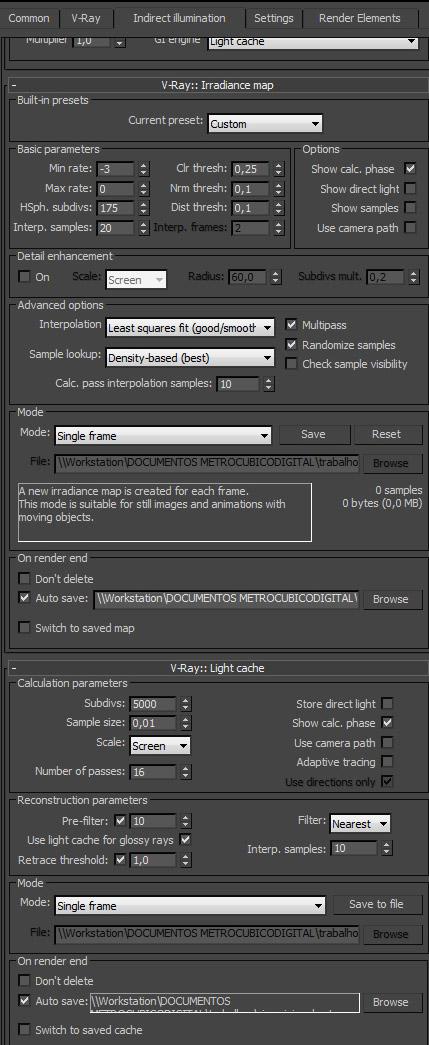
Fig.24
Fig.25 shows the V-Ray render and color mapping settings.
图 25 显示了 V-Ray 渲染和颜色映射设置。
Post-production
Everything was done in Photoshop except the last part where I used After Effects Magic Bullet Misfire Vignette. You can see this in the free video you can download with this tutorial.
一切都是在Photoshop中完成的,除了我使用After Effects Magic Bullet Misfire Vignette的最后一部分。您可以在本教程下载的免费视频中看到这一点。
Click here to download the movie associated with this tutorial
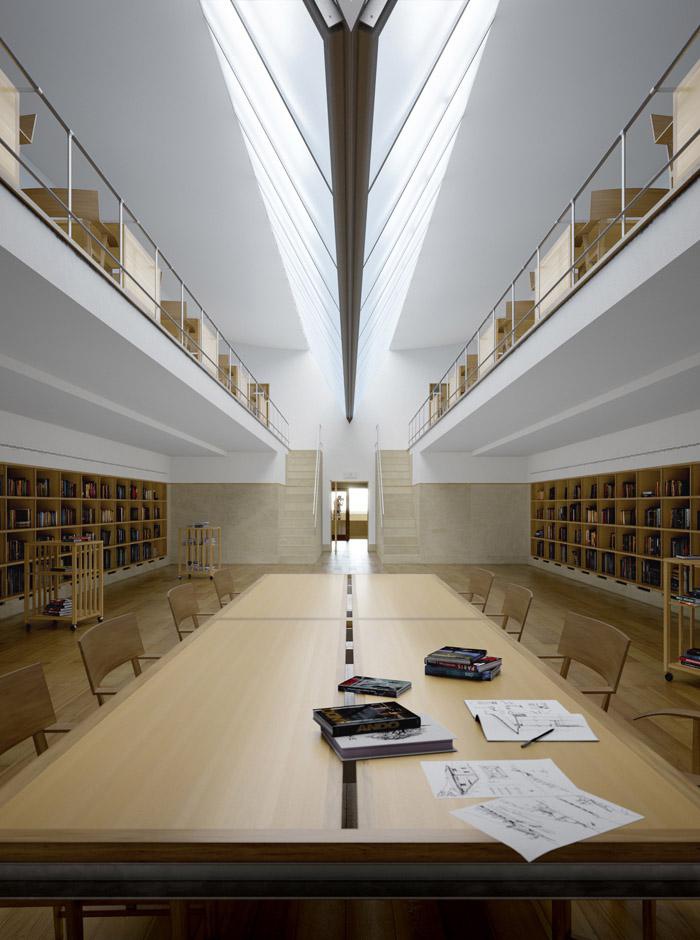
描述:
标签: 翻译 教程 图文 图书馆分类:教程 > 3D教程 > 3Ds max
发布:CGer | 查看: | 发表时间:2012/7/19 7:58:13 | 更新时间:2025/4/4 23:13:16
○ 因利息系统长期被人利用漏洞刷取CG点,目前取消利息功能,作为补偿,每个已存在账号额外一次性补偿当前余额的 30% ,后续充值赠送百分比提高 100% (10元+6%,20元+10%,50元+16%,100元+20%,200元+30%,暂定),请知悉。 ○ 充值或账号问题请【点击这里联系站长】 |
| 常见问题,点击查询: | ||
| ●CGer(Cg儿)资源下载帮助 | ||
| ●资源名词解释 | ||
| ●注册/登陆问题 | ||
| ●充值出错/修改密码/忘记密码 | ||
| ●充值赠送系统 | ||
| ●文件解压出错/解压密码 | ||
| ●Payment with Paypal | ||
| ●哪些资源会被列为付费资源 | ||
| ●为何要充值解锁 | ||
| ●免责条款 | ||
| ●联系站长(联系站长前请先仔细阅读 免责条款 ,网站只提供资源,不提供软件安装等服务!) | ||







